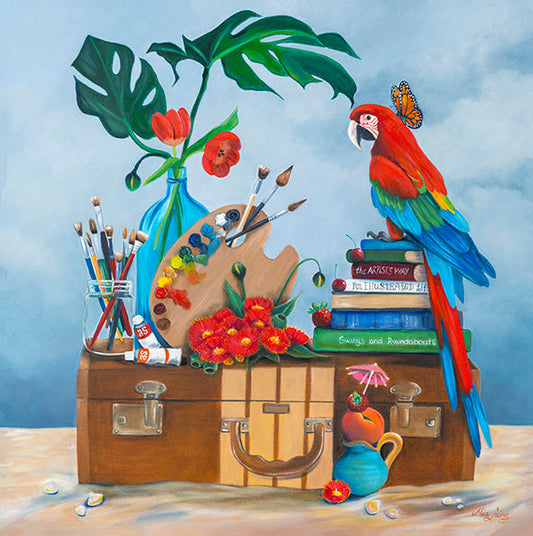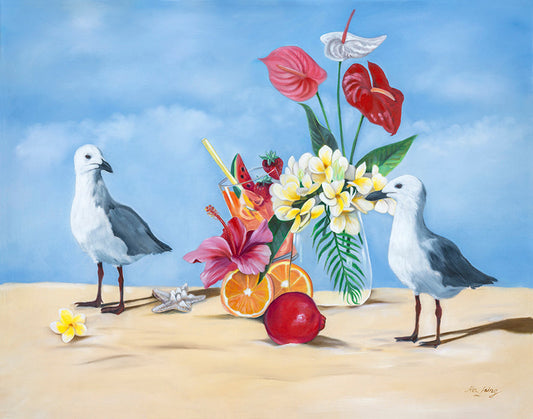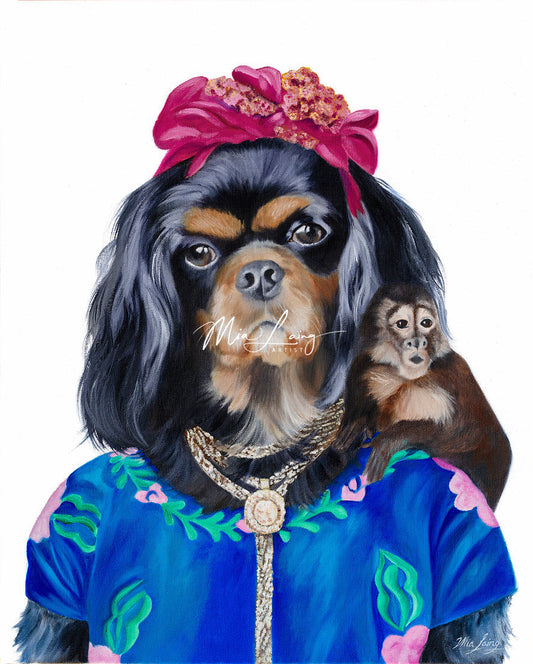I
I love all the processes of making an oil painting, taking a blank canvas through to a completed artwork is very satisfying, but the final step of varnishing is what makes it fully complete in my opinion.
Varnishing saturates colour and brings a painting to life. It also protects the artwork from grime and environmental issues such as insect poop! Who wants all the hard work of painting destroyed by grime you can't easily remove?
I have been using Gamvar varnish for many, many years now and have fiddled around to make the perfect recipe for consistent and easy varnishing of oil paintings.
When I first used this varnish, I had no end of problems with sticky edges. I used it straight from the bottle and poured it on like I regularly see all over instagram and TikTok reels, and basically hated the whole process.
I researched and emailed Gamblin products to find a solution, as I still wanted to use Gamvar for its ability to go over newly dried oil paintings, instead of the traditional method of waiting 6 for so months. Gamvar can be used within 3 weeks or when the thickest paint is dry and firm. It's also virtually odourless and removes safely. If you want to rework a painting, Gamvar can be easily removed with solvent, such as Gamsol, or my favourite 'Solvent 75' by Langridge products.
Gamblin have a great site for help with their products, you can read more here. I highly recommend researching any product that crosses over the threshold of your studio. Art supply stores are a great resource but sometimes the staff don't always know their products.
My recipe is 3 parts Gamvar : 1 part solvent. This is the magic ratio to prevent sticky edges but still give a beautiful finish. You can apply a second layer when the first has dried to give a higher gloss level. I find one application is usually perfect.
My solvent of choice is Solvent 75, for its health and safety, but Gamsol is great too
I ONLY recommend the Original Gloss Gamvar. I don't find the gloss too shiny with the solvent added. The gloss makes colours pop. The Satin and Matte are trickier to use and are best for experienced varnish users.
Take your time varnishing. Gamvar is best used in a single thin layer. It can be quite vigorously worked into the weave of the canvas even when used sparingly. A lot goes a long way.
Use a soft non shedding brush for varnishing and store it wrapped or covered in between usage to prevent dust.
Only make up a small amount of varnish, unless you are doing a big varnish day. A little goes a long way.
Always start in the middle of your artwork and only use what varnish is on your brush, you can quite heavily load the brush and if its dripping, wipe off the excess, don't pour it on. Work the varnish from the middle, pushing it outwards to the edges. Wipe your edges once complete in case of any drips.
I always do a varnish day...piling up work to be varnished all at once whilst I have everything set out and my studio vacuumed of Golden Retriever dust bunnies! Lay the artworks flat for their first hour of drying, then its okie to store them upright overnight. Do not allow the varnish artworks to touch each other whilst drying.
Hope this helps! You will find some varnishing reels on my instagram or message me with further questions.




